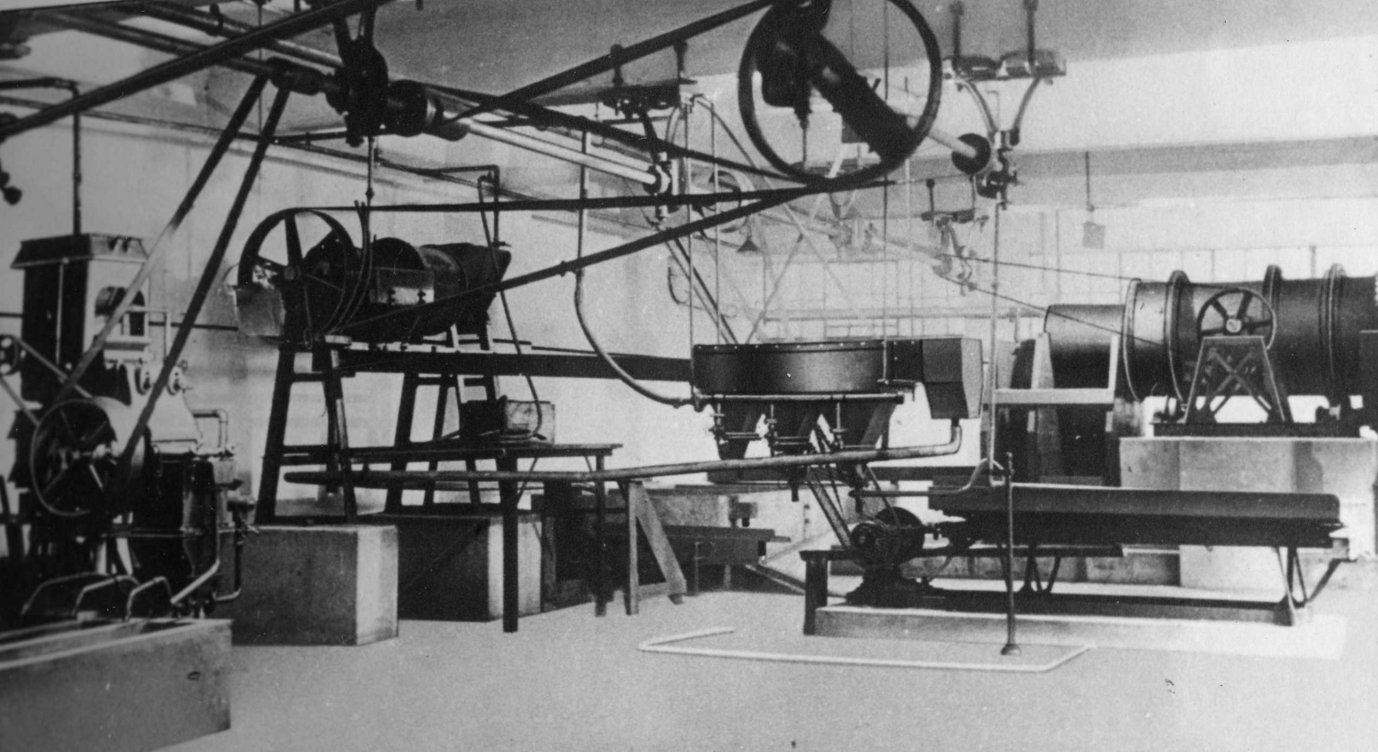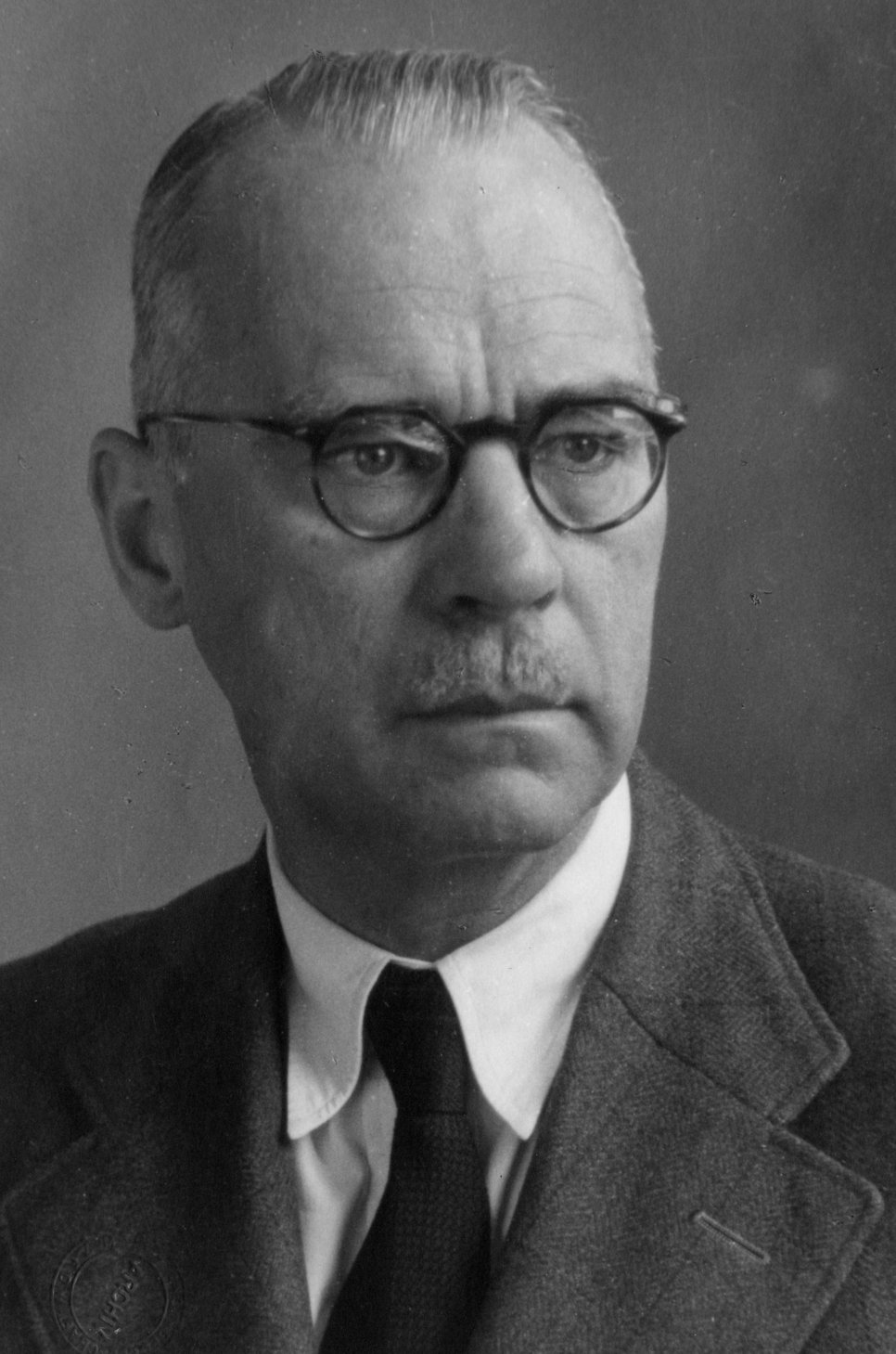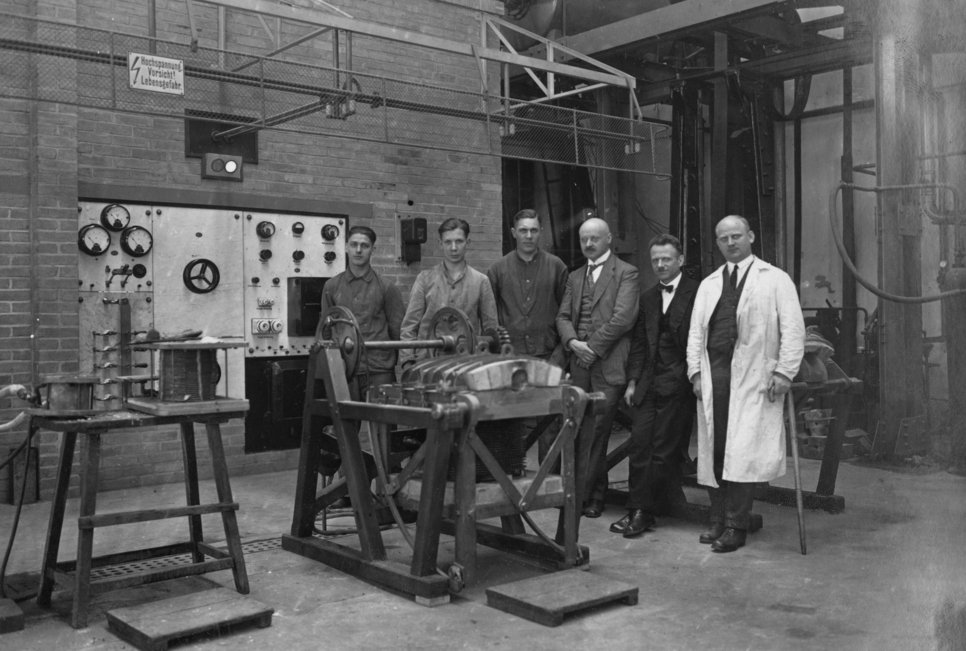
03: The Kaiser-Wilhelm-Institut für Eisenforschung during the Weimar Republic
The principal task of the Kaiser-Wilhelm-Institut für Eisenforschung (KWIE) was to conduct basic research in all areas of metallurgy: from analysing iron ores and the methods of producing and processing iron and steel to intermediate and finished products. [1]
It always closely followed established industrial practice in its work. The institute was divided into departments for metallurgy, chemistry, physics, mechanical testing and metallography, supplemented by a mechanical workshop and an administrative office.[2] After the institute had taken up its work in Düsseldorf with a staff of fourteen in December 1920 its headcount rose to as many as 49, including thirteen scientists, by the time it was officially opened on 26th November 1921.[3] Professor Fritz Wüst, Managing Director of the institute, considered the improved utilisation of ores with lower iron contents to be a particularly important research objective since the German iron and steel industry had to cope with the loss of the high quality ore deposits in both Lorraine and Luxembourg following Germany's defeat in World War I. A special ore processing department was therefore incorporated into the institute in 1920.[4]

From its early days onward the institute had supported young scientists by enabling them, after completing their studies at a technical college or university, to conduct research studies for their doctoral theses in many fields of research which were of great importance to the KWIE. The first two doctoral candidates worked at the institute in 1921.[5]

Professor Wüst had already retired at the end of 1922 after some discord between him and the Association of German Steel Manufacturers (VDEh), primarily because of some dispute regarding patent exploitation and Wüst’s unwillingness to stop working for private clients.[6] His deputy, Friedrich Körber, therefore took over the management of the institute in early 1923 and continued in this office until his death on 30th July 1944. Under Körber's management the KWIE proceeded to become the most labour and finance intensive institute under the umbrella of the Kaiser-Wilhelm-Gesellschaft (KWG) and was expanded a number of times.[7] In 1930 the KWIE already had 93 employees.[8] However, spatial conditions at the Rheinmetall site placed tight constraints on expansion.[9] In October 1928, the VDEh decided to erect a new building for the institute. In the wake of the economic crisis, however, these plans had to be put on hold again in the second half of 1930.[10] Therefore, the employees were forced to remain in their "makeshift" accommodation at Rheinmetall AG until 1935.

From 1926 onwards, the KWIE was also actively involved in defence research for the Reichswehr although this contravened the requirements of the Treaty of Versailles. It was mainly due to their own attitude which was still very national in character, which led the management of the institute to welcome the co-operation with the Ministry of Defence.[11] Beginning in the mid-1920s, other institutes were also involved in armament research which was consistent with the altogether conservative and nationally oriented views within the KWG.[12] All in all, one can ascertain a distinct willingness on the part of KWG to provide scientific assistance to the army. Due to the army's limited resources, and in spite of the financial constraints of the KWG, the institutes provided the major part of their work free of charge. This fact was acknowledged with praise by the provisioning office of the Heereswaffenamt (the army's weapons office) at the end of 1929.
[1] Dönges, Wilhelm: Geschichte und Entwicklung des Kaiser-Wilhelm-Instituts für Eisenforschung zu Düsseldorf, in: Mitteilungen aus dem Kaiser-Wilhelm-Institut für Eisenforschung zu Düsseldorf, vol. XXV, Düsseldorf 1942, p. 31.
[2] Ibid., p. 11.
[3] Ibid., p. 10.
[4] Ibid., p. 11.
[5] Ibid., p. 24; Rose, Adolf; Grandmontagne, Hedwig: Zeittafeln KWI-MPI 1917-1966, in: Max-Planck-Institut für Eisenforschung (publ.): 50 Jahre Kaiser-Wilhelm-Institut für Eisenforschung, Max-Planck-Institut für Eisenforschung in Düsseldorf, Düsseldorf 1967, p. 15-35, p. 17.
[6] Rasch, Manfred: Auf dem Weg zum Diensterfinder: Zur kommerziellen Nutzung von Forschungsergebnissen aus Kaiser-Wilhelm-Instituten, in: Hoffmann, Dieter; Kolboske, Birgit; Renn, Jürgen: „Dem Anwenden muss das Erkennen vorausgehen“. Auf dem Weg zu einer Geschichte der Kaiser-Wilhelm-/ Max-Planck-Gesellschaft, 2nd complemented edition, Berlin 2015, p. 219-242, p. 228 ff.
[7] Flachowsky, Sören: „Alle Arbeit des Instituts dient mit leidenschaftlicher Hingabe der deutschen Rüstung“. Das Kaiser-Wilhelm-Institut für Eisenforschung als interinstitutionelle Schnittstelle kriegsrelevanter Wissensproduktion 1917-1945, in: Maier, Helmut: Gemeinschaftsforschung, Bevollmächtigte und der Wissenstransfer: die Rolle der Kaiser-Wilhelm-Gesellschaft im System kriegsrelevanter Forschung des Nationalsozialismus, Göttingen 2007, p. 153-214, p. 160 f.
[8] Rose; Grandmontagne: Zeittafeln KWI-MPI 1917-1966, p. 20.
[9] Dönges: Geschichte und Entwicklung, p. 14.
[10] Ibid.
[11] Flachowsky, Sören: Von der Wagenburg der Autarkie zu transnationaler Zusammenarbeit. Der Verein Deutscher Eisenhüttenleute und das KWI/MPI für Eisenforschung 1917-2009, in: Maier, Helmut; Zilt, Andreas; Rasch, Manfred (publ.): 150 Jahre Stahlinstitut VDEh 1860-2010, Essen 2010, p. 681 f.
[12] Hachtmann, Rüdiger: Wissenschaftsmanagement im „Dritten Reich“. Geschichte der Generalverwaltung der Kaiser-Wilhelm-Gesellschaft (2 volumes), Göttingen 2007, vol.1, p. 113-116 and Flachowsky, Sören: Von der Wagenburg der Autarkie zu transnationaler Zusammenarbeit. Der Verein Deutscher Eisenhüttenleute und das KWI/MPI für Eisenforschung 1917-2009, in: Maier, Helmut; Zilt, Andreas; Rasch, Manfred (publ.): 150 Jahre Stahlinstitut VDEh 1860-2010, Essen 2010, p. 681 f.


